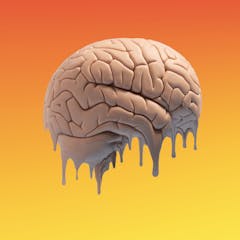
Articles on Neurobiology
Displaying 1 - 20 of 37 articles

Singer Amy Winehouse died from alcohol toxicity in 2011, the same year that the American Society of Addiction Medicine publicly recognized addiction as a brain disorder.

Improved understanding of the molecular mechanisms of addiction can change how researchers and clinicians approach treatments.

Sapolsky summarises the latest scientific research relevant to determinism: the idea that we’re causally ‘determined’ to act as we do and couldn’t possibly act any other way.

Rapidly changing temperatures and sensory environments are challenging the nervous systems of many species. Animals will be forced to evolve to survive.

Brain samples of a thylacine that died in 1880 in Berlin were kept safe by researchers for decades. Now, they have finally been analysed.

At the most basic level, the brain releases a cocktail of chemicals. But there’s more to it than that.

Why is it so difficult to swat a fly? A team of insect experts explains how a fly’s sophisticated vision allows it to quickly react to visual cues.

From figuring out where memories are stored to how sensory information translates to behavior, new technologies are helping neuroscientists better understand how the brain works.

Some might argue ‘moral enhancement’ medicine already exists — such as when we take medicine that alters our brain chemistry. Where do we draw a line?

Different painkillers provide relief in different ways. The most effective medication is the one that best targets the type of pain you’re experiencing with minimal side effects.

Understanding how the brain translates smells into behavior change can help advance search and rescue technology and treatments for neurological conditions.

The death of 57-year-old Paul Millachip at Fremantle’s Port Beach is a reminder that shark bites, though rare, can be tragic. New research aims to reduce the risk by understanding sharks’ vision.

Early reports suggested an apparent increase in OCD relapse rates and symptom severity during the pandemic. But a year on, we’re learning this may not be the case.

Scientists still still don’t fully understand how general anaesthesia affects the brain and body. A molecule found in bioluminescent stony coral may shed some light.

Many doctors believe that exercise is the closest thing to a miracle drug that modern medicine has in its arsenal. But have you ever wondered why that is so? Your brain actually benefits, too.

This Ig Nobel-winning research is shedding light on how ultrasound waves could be used to non-invasively control nerve impulses (and therefore ‘thoughts’) in our brains.

Medical treatments involving neurostimulation are resurfacing and appear to be more effective than drugs in treating depression.

Air traffic controllers have to process and manage large amounts of information to get airplanes to their destinations. The brain manages the incessant traffic of neurons in a similar fashion.

Odd findings in a brain scan of a 29-year-old woman have scientists asking new questions about how our sense of smell really works.

Born in Italy in 1909, Levi-Montalcini avoided being transported to Auschwitz as a young woman and rose to prominence as a neurobiologist. She was a co-recipient of the 1986 Nobel Prize for Medicine.
